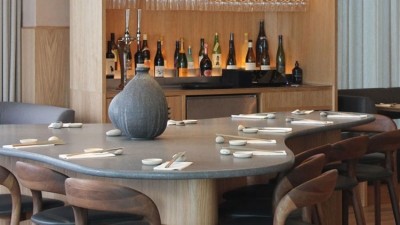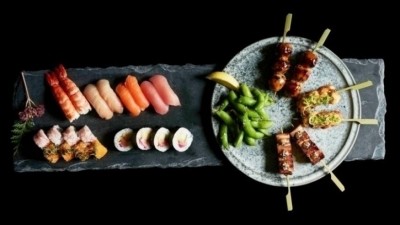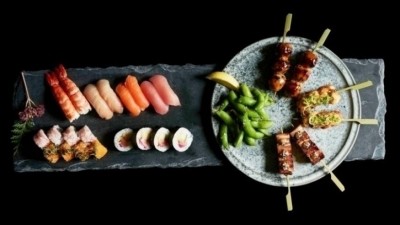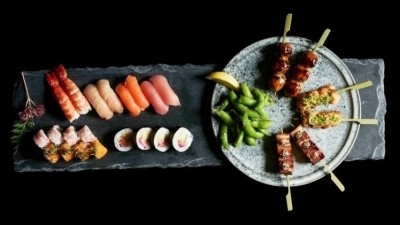Business Profile
Slow and sticky wins the race: Andreas Karlsson on Sticks'n'Sushi
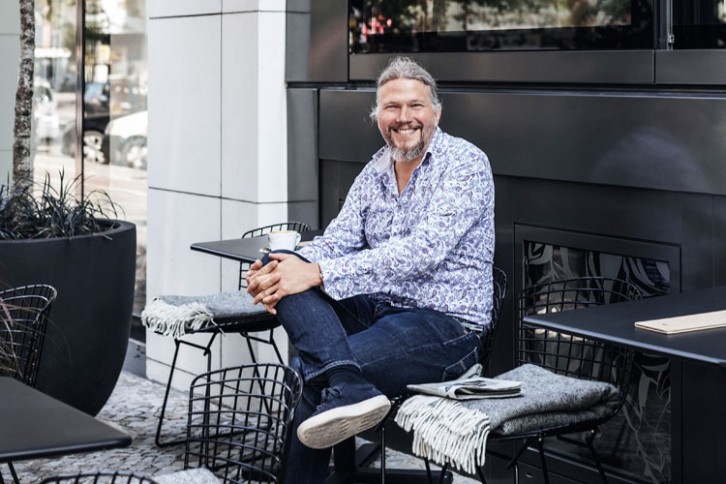
It’s difficult to think of a restaurant company that better exemplifies a slow and steady approach to growth than Sticks'n'Sushi - the Denmark-founded Japanese restaurant group that has opened 25 sites in 28 years.
“Nobody could accuse us of having an aggressive approach to growth,” deadpans Sticks'n'Sushi’s thoughtful and easy-going CEO Andreas Karlsson when quizzed on his group’s cautious approach to expansion. “But we’re still operating all the restaurants we have opened. We have got through financial crises, Covid and all sorts of other things.”
While some might think the premium casual group has underplayed its hand and been overly cautious with its rollout, a 100% hit rate across three different international markets – Denmark, the UK and, most recently, Germany – is difficult to argue with.
And even against the backdrop of Covid and a cost-of-living crisis, the numbers are very good indeed. In the financial year ending 30 June 2022 the group as a whole turned over a total of £86m generating an EBITDA of £10.4m. The UK division was the group's star performer, grossing £44m and accounting for the majority of its profits (£7.2m EBITDA).
Made in Denmark
Sticks'n'Sushi was founded in 1994 in Copenhagen by brothers Jens and Kim Rahbek and their brother-in-law Thor Andersen. With input from their mother Keiko, the brothers took inspiration from their half-Japanese, half-Danish background to create a stylish restaurant concept that combined two of Japan’s most popular culinary disciplines.
Focusing largely on sushi and kushiyaki (grilled and skewered foods) turned out to be a very smart move. Having two core menu items allowed the brand to deliver high quality food for the price point from a relatively small kitchen and gave it a point of difference to other Japanese restaurants. It also addressed one of the biggest challenges traditionally-run sushi restaurants face.
“Our USP is that we have the hot kitchen. We’re a sushi restaurant for those that don’t like raw fish. Sushi does not mean raw fish, of course, but that is often the perception,” Karlsson explains.
Sticks'n'Sushi was highly successful in Denmark, opening a further eight restaurants in the Greater Copenhagen area before turning its attention to the UK. The first Sticks'n'Sushi on these shores launched in Wimbledon in 2012 and the group has since opened a site roughly each year to bring it up to its current total of 10 sites (the majority are in central London, but the brand has regional sites in Cambridge and Oxford). The Swedish-born Karlsson is a familiar face in the industry having always been Sticks'n'Sushi’s man on the ground in the UK - he joined from Wagamama shortly before the brand crossed the North Sea – and was promoted to the top job in 2019.
Straddling two markets
Sticks'n'Sushi is one of just a handful of restaurant chains to have one foot in the luxury restaurant space and one in the casual space. While it isn’t difficult to rack up a sizeable bill – Sticks'n'Sushi offers plenty of premium ingredients including caviar and wagyu - more frugal customers can expect a bill that's roughly comparable to the likes of Wagamama or YO!
Karlsson describes his group’s ability to straddle different market segments as ‘elasticity’. “Sticks'n'Sushi can be quite affordable but it’s also possible for the cost to be similar to that of a fine dining restaurant. The brand is also elastic when it comes to site selection in that we can make Sticks'n'Sushi work in lots of different types of locations.”
White City slickers
Opened last month in Westfield London, Sticks'n'Sushi’s latest UK site is a good example of the brand’s suitability for a relatively wide variety of locations. Though the brand always targets affluent areas, a West London shopping centre is a very different trading environment to, for example, buzzy Soho or suburban Wimbledon.
Located at the end of a run of restaurants on Westfield London’s Southern Terrace, Sticks'n'Sushi White City occupies a corner site that is – ideally, in Karlsson’s view – located at the entrance of The Village, the enclave of Westfield London that’s home to luxury fashion brands including Louis Vuitton, Gucci and Prada.
"We’re a sushi restaurant for
people that don’t like raw fish"
“We have had our eye on Westfield London since the early days of the UK business. I've spent a lot of time here over the past 10 years,” says Karlsson, who remains UK-based despite now heading up the whole group. “I finally took the leap because I like a corner restaurant and I really like that we’re so close to The Village. Another big positive is the evolution of the Shepherd’s Bush area, there has been a lot of residential and commercial development.”
The 120-cover split-level space has a simple but no doubt costly fit out that’s more high-flying international restaurant brand than UK high street chain with its light wood tones, tan banquettes, low-slung booths, and terrazzo floor.
As one might expect given the slow pace of its rollout and market positioning, Sticks’n’Sushi has eschewed a cookie-cutter approach to design. “All of our restaurants are totally different but there is a language in what we do,” Karlsson explains. “We like to say that if you come into one of our spaces you can tell it's a Sticks’n’Sushi restaurant. We do not need to put our brand on the wall to tell people who we are.”
Each restaurant is tailored to both its building and the area it’s in with Soho – for example – having a notably more vibey, late night-orientated feel than Sticks’n’Sushi White City.
Sticking it to ‘em
Alongside its distinctive fusion of Scandinavian ‘hygge’ and modern Japanese design, another big part of the group’s brand identity is its menu. While food photography on menus might typically be the preserve of English cafes and pubs found in Majorca and The Algarve, is used to great effect at Sticks’n’Sushi. Nearly every dish on the expensively-glossy menu is pictured, providing a good visual aid for anyone who may be unfamiliar with the food as well as eradicating any unwanted surprises in terms of portion sizes or presentation. One imagines menu changes at the group are not taken lightly given the heavy investment in high quality photography they require.
The menu starts with a selection of dishes best described as small plates – including fried cauliflower with black truffle goma; beef tataki with miso aioli; and tuna tartare – before moving on to sashimi, sushi and ‘sticks’. This is followed by a selection of set menus that start at around £30 per head that draw from the preceding pages.
Sticks’n’Sushi’s menus are pretty much identical across its three territories except for some seasonal specials and the drinks selections. For example, plant-based is a far bigger market in Berlin (where the brand’s trio of German restaurants are located) than in Denmark or the UK, and this is reflected in the specials.
A more plant-based future?
The plant-based offer is nonetheless growing across the whole group. “Clearly we all need to make plant-based choices more frequently," says Karlsson. "The good thing for us is that sushi is not just about fish. There is a lot of plant-based stuff that can be brought into the Japanese kitchen.”
Sticks’n’Sushi certainly could not be accused of a lack of effort in this area. Its impressively colourful ‘Greenkeeper’ set menu, for example, offers nine different items including smoked beetroot tartare with Jerusalem artichoke and yuzu-kosho; tempura blue oyster mushroom; and tofu and ginger-topped nigiri.
Though he’s keeping a careful eye on developments, Karlsson has yet to put what could be termed a ‘fish substitute’ on the menu. “Do you want to try and fool people, or do you want to be truthful and say ‘if you go for the real deal you go for the real deal’? There are a lot of products out there and some of the newer ones have shorter ingredient lists, which is good. If we ever do go that way, it would need to be something that’s very pure and clean. Just because it’s plant-based does not mean it’s good.”
Marking 10 years in the UK
A big party had been planned in March last year to mark 10 years of Sticks’n’Sushi in the UK but Putin’s invasion of Ukraine saw Karlsson cancel his group’s plans and donate the money that would have been spent to the Red Cross.
“It didn’t feel right to celebrate with that going on,” he says. But the milestone of 10 UK sites in as many years has caused Karlsson to reflect. “As I often say to the team, performance is self-inflicted. Quality always wins. It takes a long time to get there but you can destroy it very quickly if it’s not top of your agenda every day. Things have been tough for a few years, and they will continue to be tough, but as a group we have got through things like inflation and soft economic outlooks before and we will do so again.”
"All of our sites are totally different
but there is a language in what we do"
One problem plaguing most restaurant groups that Sticks’n’Sushi doesn’t have to contend with too much is staffing with vaccines across the group low. “I’m happy to say we have an extremely strong team. We can operate all our restaurants from morning to night. We have not had to reduce hours to manage staffing challenges as some restaurants have.”
One restaurant at a time
It probably won’t come as much of a surprise that Sticks’n’Sushi isn’t planning to move away from its careful and strictly organic growth strategy any time soon. Karlsson doesn't talk numbers, although he does say there is considerably more scope for expansion in Germany following the success of the group’s Berlin operation and hints that there’s a lot more to do in the UK too.
“The plan is the same. We open one restaurant at a time and approach each site like it's our first. It’s never just a number – we are very careful with our site selection and will wait years to get exactly the right site in exactly the right place if necessary.
"If each restaurant is as good as the previous ones, then we can push forward with our expansion even when times are difficult.”



